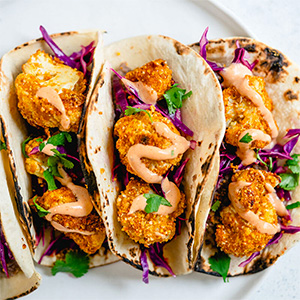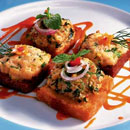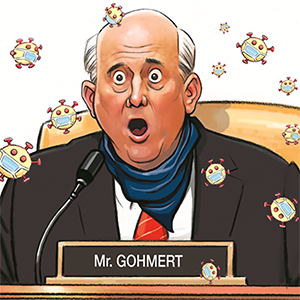What the stars -- and key grips -- ate in the Golden Age of Hollywood
Published in Variety Menu
Imagine my disappointment. The chop suey sundae is not at all what I thought it was.
I imagined it to be chicken and celery and bamboo shoots and water chestnuts served in an Americanized version of a vaguely Cantonese sauce served over ice cream, possibly with rice. And that’s probably what you thought it was, too.
But alas, it appears to have been a much more prosaic dish: Ice cream covered with figs and dates in a vanilla syrup, topped with walnuts. Other variations added cherries and chocolate syrup, or strawberries, pineapple and coconut.
The whole concept of a chop suey sundae was unknown to me until I happened to see it on a menu for the Warner Bros. studio commissary for Feb. 17, 1941.
I have long been fascinated by the whole idea of movie studio commissaries, where famous actors costumed as pirates or cowboys would sit down to dine with cinematographers and makeup artists and key grips.
Sometimes you see pictures of them, like Janet Leigh, June Allyson and Elizabeth Taylor — all with glasses of milk — dressed in their 1865-style nightgowns while filming “Little Women.” Or Clark Gable clowning around with Carole Lombard at the studio lunch counter in 1932, when they still disliked each other (love would blossom a few years later).
I’ve always wondered what they were eating. It turns out they were eating chop suey sundaes.
At least, some of them were. Chop suey sundaes — they cost 20 cents in 1941 — were just one item on the impressively huge menu at Warner’s.
There were 12 specials that rainy February day, everything from canapes of anchovies (35 cents) and crab leg cocktail (45 cents) to broiled rex sole (50 cents) and roast sirloin of beef with baked potato and Yorkshire pudding for 75 cents.
Those specials were somehow considered different from the two specials of the day: broiled Spencer steak (a boneless ribeye) with baked potato and lima beans (55 cents) or a fried ham-and-egg sandwich on toast with “sno shu” potatoes (I don’t know what those are, but the whole thing was just 25 cents).
Listed under entrees of the day were half a broiled lobster or Southern fried chicken, each offered for 55 cents, while corned beef hash with a poached egg was 45 cents. For 50 cents, you could get an omelet with creamed chicken and green peas.
That omelet was part of the day’s entrees; the larger part of the menu that didn’t change also offered 10 other omelets: plain, with jelly, with parsley, Spanish, with oysters, with chicken livers, with cheese, with asparagus tips, with onions and “country style.”
The commissary, incidentally, did not open until 11 a.m. The omelets, and several other egg dishes, were all served for lunch (until 2:30 p.m.) and dinner (4:30-8 p.m.).
The food could get fancy. Shrimp, lobster or crab Newburg was 75 cents, or perhaps it was shrimp, lobster and crab Newburg. Fresh brook trout was 85 cents, and you could get oyster stew with milk for 50 cents or cream for 55 cents.
Tenderloin, one of the most expensive items on the menu, was 95 cents — this at the end of the Depression when the average American worker made about $1,315 per year.
If they didn’t want to go all the way to the tenderloin side of the scale, diners at the commissary could get New York sirloin steaks (now called New York strip), T-bones and top sirloin in the 65 to 80 cent range. Or they could have their choice of lamb chops or pork chops, half a broiled chicken or chicken a la king.
Cold meats came with potato salad and were surprisingly pricey — Virginia ham and smoked turkey both cost a cool $1, while cold roast turkey with imported Swiss cheese was, inexplicably, 85 cents.
The salads all came with French dressing, but the ice cream sundaes came with a variety of toppings: butterscotch, marshmallow, bittersweet, caramel, milk chocolate and, of course, chop suey. Plenty of other desserts were on the menu, too, everything from strawberry shortcake to prunes.
Some of the sandwiches were what you might expect. You could get boiled ham, fried ham and baked ham, along with ham and egg. You could get a steak sandwich, a prime rib sandwich or cold roast beef. You could get an American cheese sandwich, pimento cheese or Swiss cheese, both domestic (15 cents) and imported (25 cents).
And then things start to get weird. The manager special sandwich was made with baked ham, chicken and peanut butter. The juice selections include carrot, clam or fig. Milk was 15 cents, but certified milk was 25 cents.
The malted milk came either with or without an egg. One of the desserts was Grape Nut custard pudding, which I just looked up and apparently was popular in New England, and may still be.
And then there’s the sneaky little insult that I just love, a comment on the quality of a particular brand of beer.
Pabst Blue Ribbon was 15 cents. Canada Dry ginger ale was 20 cents.
©2025 STLtoday.com. Distributed by Tribune Content Agency, LLC.










Comments